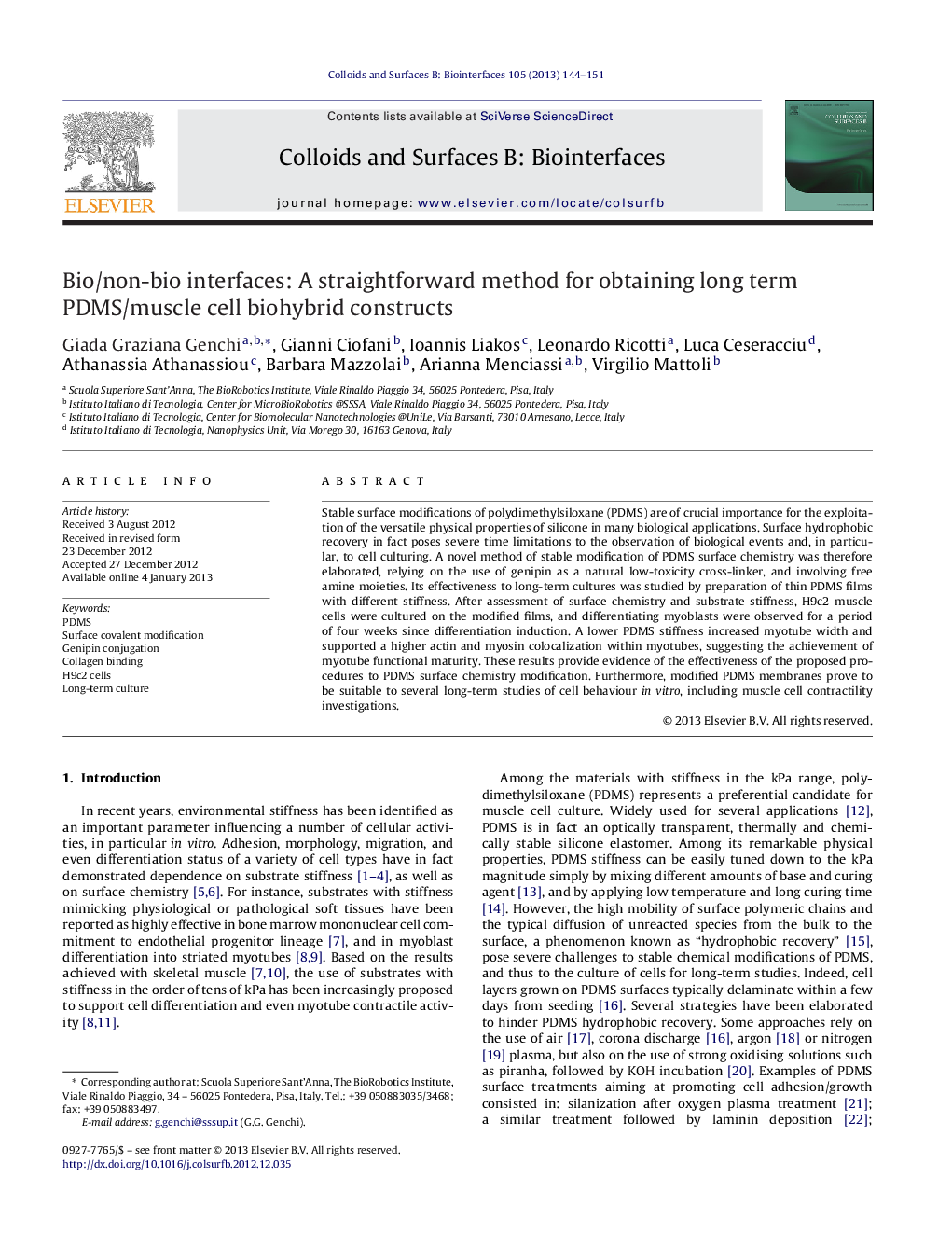| Article ID | Journal | Published Year | Pages | File Type |
|---|---|---|---|---|
| 600223 | Colloids and Surfaces B: Biointerfaces | 2013 | 8 Pages |
Stable surface modifications of polydimethylsiloxane (PDMS) are of crucial importance for the exploitation of the versatile physical properties of silicone in many biological applications. Surface hydrophobic recovery in fact poses severe time limitations to the observation of biological events and, in particular, to cell culturing. A novel method of stable modification of PDMS surface chemistry was therefore elaborated, relying on the use of genipin as a natural low-toxicity cross-linker, and involving free amine moieties. Its effectiveness to long-term cultures was studied by preparation of thin PDMS films with different stiffness. After assessment of surface chemistry and substrate stiffness, H9c2 muscle cells were cultured on the modified films, and differentiating myoblasts were observed for a period of four weeks since differentiation induction. A lower PDMS stiffness increased myotube width and supported a higher actin and myosin colocalization within myotubes, suggesting the achievement of myotube functional maturity. These results provide evidence of the effectiveness of the proposed procedures to PDMS surface chemistry modification. Furthermore, modified PDMS membranes prove to be suitable to several long-term studies of cell behaviour in vitro, including muscle cell contractility investigations.
Graphical abstractGenipin-mediated covalent binding of collagen to PDMS surface supports long-term muscle cell culture and differentiation.Figure optionsDownload full-size imageDownload as PowerPoint slideHighlights► Thin PDMS films are presented for skeletal muscle cell culture. ► An innovative functionalization approach is proposed, relying on genipin and allowing a straightforward covalent binding of collagen to PDMS surface. ► Bulk mechanical properties of PDMS films are evaluated and related to cellular response. ► Long-term (about 1 month) myoblast differentiation is achieved.
